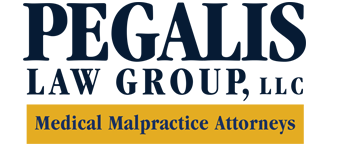Article by brave physician highlights her own mother’s hospital stay filled with avoidable mistakes due to a culture lacking safety.
This brave article by a young physician highlights her own mother’s hospital stay as being filled with avoidable mistakes and an absence of safety.
Learning to Care about Patient Safety
Elaine Besancon, MD
Most of us can recall a particularly memorable patient who inspired or altered our career path. My patient was a 63-year-old woman with inflammatory breast cancer who had been in remission and asymptomatic until her family suddenly couldn’t wake her one morning. She was admitted to the hospital and diagnosed with meningeal metastases. Her husband, son, and daughter were by her bedside all day, nearly every day. Despite their best efforts to be vigilant and the fact that she was in a “top 100” hospital, her care was hardly error-free, and the family’s grief was compounded by her frequent falls, a black eye from an errant stethoscope, several severe drug side effects (one of which left her nearly comatose for a month before the offending drug was recognized and discontinued), one narrowly avoided unnecessary neurosurgical procedure, and the administration of an incorrect intrathecal chemotherapy drug.
Some days brought nightmarish scenes that further emphasized how difficult it was to keep such a complex patient safe. One morning I walked in to find her hands and forehead covered in blood. While hallucinating and between nursing checks, she had pulled out every cranial staple from her recent neurosurgery by hand, an event that put her at great risk for infection. Needless to say the scene also shook the family’s confidence in the care team. Though the medical team tried everything to get her stable enough to go home, the severity of her illness, combined with the complications of numerous adverse events, kept her in the hospital, where she slowly died over the course of 6 months.
The patient I’ve described was my mother. I was the daughter who sat by her bedside for months, watching the challenges of caring for a complicated patient through the eyes of a family member rather than those of a medical student. Of all the subjects I had been taught during medical school, the one I felt was most important during my mother’s hospitalization was also one I’d learned least about implementing in my daily practices: patient safety. Of course we’d had some instruction in the subject—we’d had several lectures on concepts like “Toyota Lean” and the “swiss cheese model” of error occurrence. But these concepts had often seemed too business-oriented or administrative to be directly relevant to trainees who chose medical school because of a love of science and patient care.
Even if we had been inspired to become more involved in safety practices, they were always discussed in generalities with little instruction about how to adopt them other than by being vigilant, writing thorough sign-out notes, and perhaps discussing appropriate patients at morbidity and mortality conferences. Following my experiences with my mother, I attempted to figure out how to report errors or near misses I witnessed in our hospital while on third-year rotations. But I found that, as a medical student, it was impossible for me to report an error through the usual channels—our computer system wouldn’t even accept it.
Treating patient safety as an afterthought in the medical school curriculum invites students to continue to treat it that way after medical school and into their careers. But medical school is the perfect time to emphasize patient safety and quality improvement. Medical students have not yet been desensitized to the inefficiencies and unsafe practices that many seasoned health care professionals not only tolerate but are often not even consciously aware of. Learning patient safety must be a hands-on experience, however, for it to truly resonate with students.
Though I am now passionate about the topic, I rarely thought much about it until my mother’s hospitalization, despite the lectures and tutorial cases I’d had in medical school. Hypothetical cases may be acceptable for an introduction to the field, but, just as hypothetical cases in pathophysiology are supplanted by experience with real patients for which there is no substitute, patient safety education should not be relegated to the realm of the theoretical.
The 2011 ACGME requirements mandate more direct involvement in patient safety for residents [1], which is an important step in the right direction. Similar training can easily be extended to students as well. Though some have cited the admittedly numerous barriers to curricular reform [2], not the least of which are funding and staffing issues, basic safety experience for students need not be expensive. Interventions as simple as allowing medical students to report the errors and near misses they witness and sit in on preexisting safety committee meetings would cost little but go a long way towards exposing trainees to the importance of safety and quality improvement efforts.
It also became clear to me during my mother’s hospitalization that the frontline caregivers were the individuals most likely to notice areas for improvement in the day-to-day operations of the hospital. At her institution, this included physician’s assistants and nurses; at my current institution, it also includes residents and medical students. During my mother’s hospitalization, these frontline caregivers were far more aware of areas in the hospital that needed improvement than were members of the patient safety committee (mostly attending physicians, department leaders, and administrators). Unfortunately, there was a large disconnect between these two groups.
A factor that contributed to my mother’s many falls during her periods of delirium was that the cords for the bed alarm and the chair alarm were identical and only one could be plugged in to the monitoring device at a time. This meant that there was no way for a busy nurse to assess which alarm was active with a quick glance—one would have to stop and trace the cord all the way back from the monitor to the chair or bed to confirm that the correct alarm was plugged in. Many of the nurses knew this, and several easy fixes leap to mind for this problem, but the nurses had no clear procedure for informing those who could do something about the problem, nor did they seem to feel that it was their responsibility to find a way do so. I’m in no way faulting the nurses in particular for this failing—what I wish to say is that issues of safety, until they resulted in a catastrophic outcome, often fell outside of nearly everyone’s job description. To remedy this, the culture of safety needs to extend not just to medical trainees, but also to any hospital employee who interacts with patients or observes patient care. All of these individuals should have easy access to a mechanism for reporting safety concerns.
There is one other important group of individuals that is almost never included in calls for more inclusive safety efforts: family members. Family members can find it difficult to speak up when we have safety concerns. Even as a medical trainee, I worried about asking questions of my mother’s care team. What if I annoyed them? What if we became labeled a “difficult family”? Would my mom’s care suffer as a result? Often, especially early in her hospital course, I opted not to voice any safety concerns because of fears like these.
I’ve heard many other reasons that family members don’t speak up—we feel it’s not our place, that the medical team is too busy, or that the staff would surely have noticed if something were wrong. Caregivers often allow—or even encourage—these attitudes to persist. As a result, family members become involved in the safety process only when they think something disastrous has happened and file an incident report, a complaint, or a lawsuit.
It is undeniable that rounds are speedier when family members do not ask questions or interject comments during our presentations. However, because nationally standardized medical records systems are still far in the future and frequent handoffs and cross-coverage have become unavoidable realities, patients’ family members can be the best sources of continuity. Often they’ve been present for every ED visit, outside hospital stay, and outpatient appointment. A couple of months into my mother’s hospital stay, details like her need for a much lower dose of phenytoin than the average patient had been buried deep within her chart. Frequently, all that kept a harried covering physician from administering an overdose when she was seizing was our family’s intervention. Several times when we weren’t there overnight, an excessive dose was given and Mom would sleep for days. Though this is an extreme example, more purposeful involvement of the family has the potential both to reduce errors and increase family satisfaction if it is clear that physicians are attempting to address their concerns.
As a family member, I found the errors that affected my mother to be the most distressing part of her illness. Now, as a physician, worrying that I will commit an error that causes my patients to suffer is a powerful motivator for my patient safety work. But as much as I hope I can make a difference in my institution, a culture of safety won’t come from a few individuals who feel strongly about these issues working in each hospital. Not until safety is an emphasized part of everyone’s job description can we hope to reduce dramatically the great number of preventable errors taking place in our hospitals. I hope that in the future we can design novel educational interventions that convince medical personnel to prioritize safety issues, so that they won’t have to be convinced, as I was, by watching patients like my mother suffer.
Author: Elaine Besancon , MD, graduated from Harvard Medical School and is an internal medicine intern at Brigham and Women’s Hospital in Boston. Her research interests include patient safety and quality improvement. Copyright, American Medical Association Journal of Ethics, Virtual Mentor.org, Sept. 2011 References Accreditation Council for Graduate Medical Education. Common program requirements. http://www.acgme.org/acwebsite/home/Common_Program_Requirements_07012011.pdf. Accessed June 1, 2011. Nash D. Today’s new physicians are unable to improve patient safety. KevinMD . http://www.kevinmd.com/blog/2010/08/todays-physicians-unable-improve-patient-safety.html. Accessed June 1, 2011.
Recent Posts
Popular Posts
categories
- Uncategorized
- Infographic
- Patient Safety
- Patient Health
- Stillbirth
- Birth Injuries
- Medical Malpractice
- Medical Negligence
- Event
- Erb's Palsy
- Injury
- ER
- Video
- Cancer Misdiagnosis
- Medication Errors
- Cerebral Palsy
- Medical Negligence Lawyer
- Anesthesia Injuries
- Brachial Plexus
- Prostate Cancer
- About Us
- Men's Health
- Skin Cancer
- Breast Cancer
- Misdiagnosis



